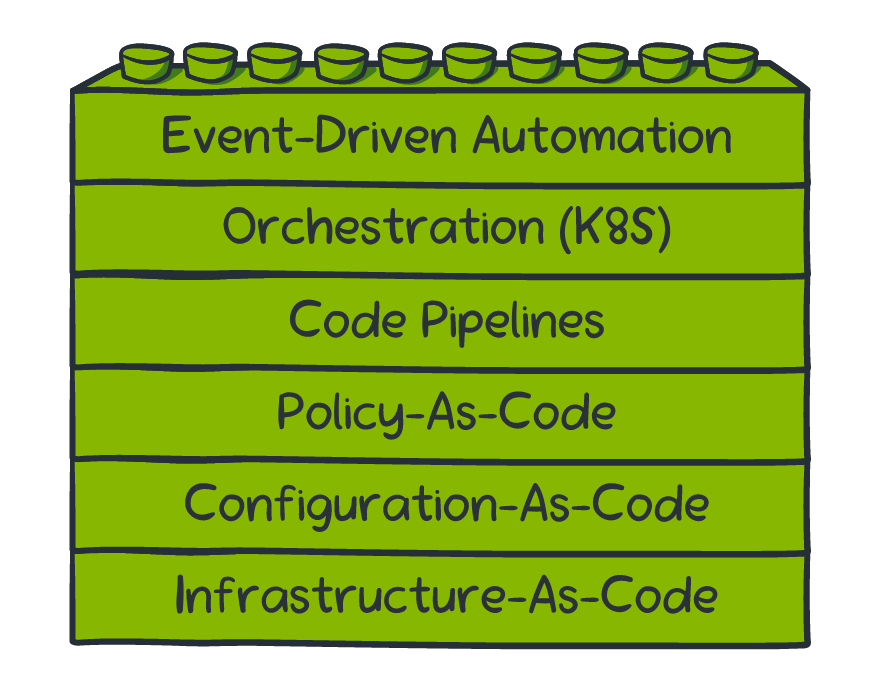Automation Maturity Levels
Categories:
Automation maturity within an organization can be visualized as a progression of interconnected LEGO blocks. Each level builds upon the previous one, forming a logical sequence that ensures a cohesive and effective automation strategy.

For instance, consider the journey from Infrastructure-as-Code (IaC) using Ansible as the starting point. This foundational level involves defining and managing infrastructure through code, streamlining processes and enhancing reproducibility. Moving up the maturity ladder, the next level introduces Configuration-as-Code, extending the automation scope to system configurations.
As you progress to Policy-as-Code, automation extends to enforcing organizational policies through code, ensuring compliance and consistency. The journey continues with the implementation of Code Pipelines, where tools like Azure DevOps come into play. However, it’s crucial to follow the logical sequence; starting with Code Pipelines before having a solid IaC foundation might lead to suboptimal tool usage.
Orchestration, represented by technologies like Kubernetes (K8s), takes automation to a higher level by managing and coordinating complex workflows. Finally, the top level involves Event-Driven Automation, where actions are triggered in response to specific events, enhancing adaptability and responsiveness.
An example illustrates the importance of this logical sequence. If you initiate Code Pipelines using Azure DevOps before establishing IaC with Ansible, you may find yourself using an inferior tool for infrastructure provisioning. However, with Ansible in place for IaC, you can seamlessly integrate it into the pipeline, allowing each tool to excel in its specialized tasks.
In summary, understanding and following the logical progression of automation maturity levels ensures optimal tool utilization and a robust foundation for efficient and scalable automation within your organization.
Feedback
Was this page helpful?
Glad to hear it! Please tell us how we can improve.
Sorry to hear that. Please tell us how we can improve.